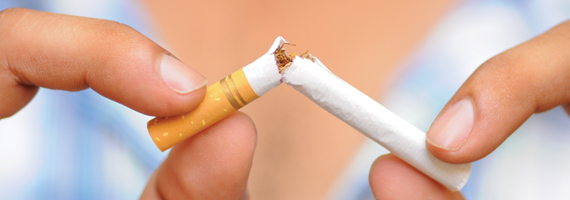
Tobacco Sales to Youth Lowest Ever Reported
The United States continues to gain ground in its battle against tobacco sales to youth under age 18, as a new report shows the average national retailer violation rate has reached an all-time low. According to the latest findings from the Synar Amendment Program, which collects state-by-state data on the rate of illegal tobacco sales to youth, just 8.5 percent of retailers illegally sold tobacco to youth in Fiscal Year 2011 (FY 2011), compared with 40.1 percent of retailers in FY 1997, the first year data were collected.
The program, managed by SAMHSA, was introduced by the late Congressman Mike Synar of Oklahoma and enacted as Section 1926 of the Alcohol, Drug Abuse, and Mental Health Administration Reorganization Act. The Synar Amendment requires states, the District of Columbia, and U.S. territories to enact and enforce laws prohibiting the sale or distribution of tobacco products to individuals under age 18. It also requires these entities to conduct random, unannounced inspections of tobacco outlets and report these annual findings to the Secretary of the U.S. Department of Health and Human Services.
According to the latest report, all states and the District of Columbia were found to be compliant with the Synar requirements for the sixth year in Synar history. Furthermore, a total of 34 states reported a retailer violation rate below 10 percent, while 12 states reported a rate below 5 percent—a sign that the Synar program is contributing significantly to prevention efforts.
“Smoking is the nation’s leading cause of preventable death. We must pursue every opportunity to prevent the kids and young adults of today from becoming lifelong adult smokers of tomorrow,” said SAMHSA Administrator Pamela S. Hyde, J.D. “The success of the Synar program is a testament to how preventing underage youth from gaining illegal access to tobacco products can have a tremendous impact.”
Tobacco accounts for nearly 443,000 deaths each year and is the leading cause of death and disease in the United States. Among adults who have ever smoked daily, 88 percent report that they first smoked by age 18. To alleviate youth tobacco use, the Synar program calls on states to strictly enforce tobacco laws; conduct random, unannounced inspections of over-the-counter tobacco outlets; and produce reports on steps taken to carry out the law.
SAMHSA provides technical assistance to states to help them meet these requirements. Any states that do not comply are subject to a 40 percent penalty of their Substance Abuse Prevention and Treatment Block Grant funding.
SAMHSA’s involvement is inspired by the importance of prevention. Stopping tobacco use before it starts, particularly among youth, is critical to preventing future use of tobacco. Tobacco use is also associated with misuse of alcohol and other illicit drugs. Statistics indicate that 52.9 percent of youth age 12 to 17 who smoked cigarettes in the past month have used an illicit drug, compared with 6.2 percent of youth who did not smoke cigarettes.
The significant progress made in decreasing tobacco sales to youth is representative of both a change in the selling pattern of retailers as well as improved enforcement of laws and regulations. SAMHSA recommends that states adopt comprehensive plans that have multiple components, including enforcement, education, and collaborations. Further information and a list of recent accomplishments can be found on the Synar fact sheet web site. For a full outline of the most recent findings in detail download the Synar annual report. (PDF - 649 KB).